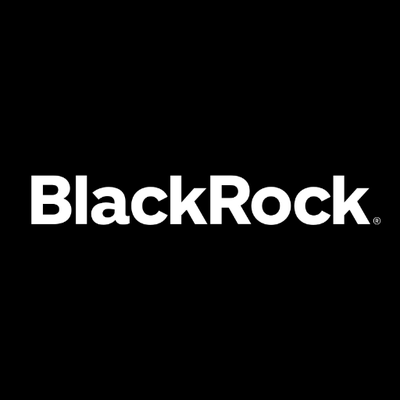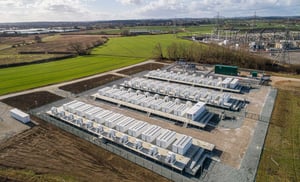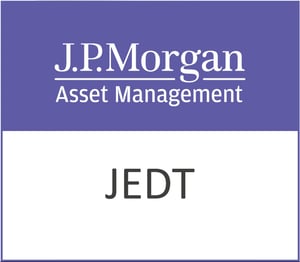BlackRock Income and Growth Investment Trust plc (LON:BRIG) has announced its latest portfolio update.
All information is at 31 March 2025 and unaudited.
For more information on the BlackRock Income and Growth Investment Trust, please visit: www.blackrock.com/uk/brig
Performance at month end with net income reinvested
| OneMonth | ThreeMonths | OneYear | ThreeYears | FiveYears | Since1 April2012 | |
| Sterling | ||||||
| Share price | -2.0% | 1.8% | 11.1% | 19.3% | 62.5% | 138.7% |
| Net asset value | -3.3% | 2.4% | 8.1% | 20.3% | 67.8% | 143.9% |
| FTSE All-Share Total Return | -2.3% | 4.5% | 10.5% | 23.3% | 76.5% | 146.0% |
| Source: BlackRock |
BlackRock took over the investment management of the Company with effect from 1 April 2012.
At month end
Sterling:
| Net asset value – capital only: | 220.44p |
| Net asset value – cum income*: | 223.44p |
| Share price: | 196.00p |
| Total assets (including income): | £49.3m |
| Discount to cum-income NAV: | 12.3% |
| Gearing: | 7.2% |
| Net yield**: | 3.9% |
| Ordinary shares in issue***: | 19,399,743 |
| Gearing range (as a % of net assets): | 0-20% |
| Ongoing charges****: | 1.15% |
| * Includes net revenue of 3.00 pence per share | |
| ** The Company’s yield based on dividends announced in the last 12 months as at the date of the release of this announcement is 3.8% and includes the Interim Dividend of 2.70p per share declared on 20 June 2024 with pay date 29 August 2024 and the 2024 final dividend of 4.90p per share declared on 07 January 2025 with pay date 14 March 2025. | |
| *** excludes 10,081,532 shares held in treasury. | |
| **** The Company’s ongoing charges are calculated as a percentage of average daily net assets and using management fee and all other operating expenses excluding finance costs, direct transaction costs, custody transaction charges, VAT recovered, taxation and certain non-recurring items for the year ended 31 October 2024. In addition, the Company’s Manager has also agreed to cap ongoing charges by rebating a portion of the management fee to the extent that the Company’s ongoing charges exceed 1.15% of average net assets. | |
| Sector Analysis | Total assets (%) |
| Banks | 12.1 |
| Support Services | 7.5 |
| Pharmaceuticals & Biotechnology | 7.3 |
| Oil & Gas Producers | 6.5 |
| General Retailers | 5.8 |
| Real Estate Investment Trusts | 5.7 |
| Software & Computer Services | 5.2 |
| Financial Services | 5.1 |
| Nonequity Investment Instruments | 5.0 |
| Nonlife Insurance | 4.0 |
| Mining | 3.9 |
| Personal Goods | 3.4 |
| Tobacco | 3.1 |
| Aerospace & Defence | 3.0 |
| Industrial Engineering | 2.8 |
| Media | 2.8 |
| Household Goods & Home Construction | 2.7 |
| Travel & Leisure | 2.2 |
| Food Producers | 1.8 |
| Life Insurance | 1.6 |
| Electronic & Electrical Equipment | 1.1 |
| General Industrials | 0.9 |
| Beverages | 0.6 |
| Net Current Assets | 5.9 |
| —– | |
| Total | 100.0 |
| ===== | |
| Country Analysis | Percentage |
| United Kingdom | 91.9 |
| United States | 2.2 |
| Net Current Assets | 5.9 |
| —– | |
| 100.0 | |
| Top 10 Holdings | Fund % |
| AstraZeneca | 6.6 |
| RELX | 5.5 |
| Shell | 4.7 |
| HSBC Holdings | 4.4 |
| Standard Chartered | 3.7 |
| 3i Group | 3.7 |
| Unilever | 3.6 |
| Lloyds Banking Group | 3.3 |
| British American Tobacco | 3.3 |
| Admiral Group | 3.0 |
Commenting on the markets, representing the Investment Manager noted:
Market Summary:
Equity markets retreated in March amidst rising economic concerns and escalating geopolitical tensions. The primary cause of the broad-based weakness was concern about US economic growth, driven by tariff uncertainty and the impact of higher bond and credit yields. European and UK markets fared slightly better, benefitting from ongoing rotation from investors seeking alternatives to the US, but still ended the month in the red. The STOXX Europe 600 benchmark closed -3.7%, whilst the S&P500 closed -5.8%, and the FTSE All-Share closed -2.2%.
March began with the S&P500 posting its largest one-day decline of 2025, falling 1.8% as President Trump announced 25% tariffs against Mexico and Canada will go into effect the next day. Investors rotated into defensive sectors (staples, healthcare) as growth fears were heightened, and technology lagged as shares of the world’s largest tech companies closed lower across the board. Just a week later, the S&P500 yet again notched its worst day in 2025, falling 2.7% as economic fears mounted, and the Nasdaq Composite tumbled 4% as shares of big tech extended their selloff. The tariff escalation only exacerbated investors’ concerns around inflation remaining higher for longer, and dampened expectations for US economic growth, as the S&P500 briefly entered correction territory midway through the month.
Closer to home, the UK Chancellor’s Spring Statement showed her commitment to maintaining fiscal headroom which had been questioned earlier in the quarter when gilt yields moved higher in January. The statement delivered a mixed outlook for economic policy, with limited fiscal headroom at c.£10bn, though economic growth projections were revised upward from 2026 onwards. Positively, financial market reactions to the Spring Statement were minimal; government bond yields and equity indices saw limited movements on the day. The FTSE All-Share ended the month -2.2%, driven lower by consumer services and basic materials, whilst energy was the largest contributor. UK equities have been quietly outperforming many other regions year-to-date, returning +4.5% so far in 2025, and ended March relatively higher than both US and European headline indexes.
Stock comment:
Having had a strong run in the last year, with shares +80% over 12 months, Standard Chartered shares fell back in March as concerns over US tariffs and the extensive exposure to Asian economies worried investors.
Melrose Industries was another top detractor as results surprised negatively on near-term free cash flow expectations where a higher-than-expected variable consideration was outlined. This is a facet of the Revenue Risk Sharing Program (RRSP) accounting that was not fully understood by the market. On these programs. more profit on delivery of an engine is recognised as a platform matures. As a result, the company highlighted a strong free cash flow number for 2029, but as ever with cash flow projections, more weight and im-portance is given to near term numbers and thus the shares reacted quite negatively.
3i Group also detracted from relative performance as like-for-like sales growth in the first quarter was +6.1%, below market expectations. The YTD like-for-like sales have been affected by temporary availability issues in certain stores and DCs as a result of the changeover of Action’s ERP system at the turn of the year. These issues have now been dealt with, but the share price was down as a result.
WH Smith shares fell following the announced sale of its High Street business which is dilutive to group earnings. Strategically this leaves the business in the faster growing, and more cash generative, global travel business and therefore, we believe this is a sensible decision for the long term. Pearson shares struggled on the back of concerns over increased tariffs hitting their US business, potentially exacerbated by a weakening dollar.
Phoenix Group was the top positive contributor to performance during the month. The company’s full-year results impressed investors, with total cash generation and operating cash both ahead of consensus by c.15% at £1.8bn and £1.4bn respectively. The business continues to execute ahead of expectations, meeting its 2026 targets almost 2 years early.
Great Portland Estates was another top contributor. During the month, there was an upbeat investor event highlighting their strong flexible office space product, which is renting ahead of expectations, and ahead of previously anticipated rental values. The shares trade at a significant discount to book value which we expect to rise further as they build out their development pipeline.
Next continues to produce outstanding results whilst also remaining attractively valued. The group is performing well across both its UK and International businesses; reinvestment in its distribution capabilities have enabled it to improve productivity; and increased marketing spend, combined with an alliance with Zalando, have led to an acceleration in overseas growth. Cost headwinds remain significant but Next has scope to offset these through improved sourcing and modest price increases.
The share price of Hays spiked midway through the month after news that Germany, Hays’ largest market, will be unleashing fiscal spending as it drops the debt brake to try and transform economic growth, which the market anticipates will be beneficial as recruitment is expected to pick up.
Changes:
During the period, we purchased BAE, Melrose and Rolls Royce. The putative redrafting of global alliances has prompted a significant rethink by European countries of their plans for defence spending. President Trump’s rhetoric has led to seismic shifts within NATO and Europe’s fundamental shift in its fiscal approach, led by Germany’s commitment, in echoes of the eurozone crisis, to spend `whatever it takes’ to underpin Europe’s independence. We believe these holdings will be beneficiaries of such an increase in defence expenditure.
Outlook:
Having passed peak interest rates with stable labour markets and broadly stable macroeconomic conditions, equity markets have performed strongly through 2024. 2025 has started with a change of market leadership, with European and UK equity markets outperforming the US. The promise of greater fiscal spending in China and parts of Europe have served to buoy equity markets at a time when the US risk appetite appears to be re-trenching with concerns on trade, tariffs and fiscal consolidation. The persistency of this change in market leadership will largely depend on whether `predictability’ returns to US policy, the volatility of which is causing corporates to continually reassess their strategies towards the world’s largest economy.
Following a period of extended economic weakness, the Chinese Government has begun a more concerted campaign aimed at accelerating economic growth and arresting deflationary pressures. Recent policy moves have sought to improve and encourage lending into the real economy with a sizable fiscal easing programme announced. Whilst the scale of the easing is large, western markets and commentators have remained sceptical of its impact and effectiveness whilst awaiting evidence to the contrary. In the UK, the recent budget promised and delivered a large-scale borrowing and spending plan. Whilst sizable increases in minimum wage and public sector wage agreements likely support a brighter picture for the UK consumer, business confidence remains low impacting the growth outlook. UK labour markets remain resilient for now with low levels of unemployment while real wage growth is supportive of consumer demand albeit presents a challenge to corporate profit margins.
With the UK’s election and budget now over, the market’s attention will focus on the subsequent policy actions of the new US administration under Donald Trump. The global economy has benefited from the significant growth and deflation `dividend’ it has received from globalisation over the past decades. The impact of a more protectionist US approach and the potential implementation of tariffs may challenge this `dividend’. Indeed, we anticipate more uncertainty given the announcements of significant federal budget cuts and a stricter immigration policy. We would anticipate asset markets to be wary of these policies until there is more clarity as we move through 2025. Conversely, we believe political certainty, now evident in the UK, will be helpful for the UK and address the UK’s elevated risk premium that has persisted since the damaging Autumn budget of 2022. Whilst we do not position the portfolio for any election or geopolitical outcome, we are mindful of the potential volatility and the opportunities that may result, some of which have started to emerge.
The UK stock market continues to remain very depressed in valuation terms relative to other developed markets offering double-digit discounts across a range of valuation metrics. This valuation anomaly saw further reactions from UK corporates who continue to use their excess cashflows to fund buybacks contributing to a robust buyback yield of the UK market. Combining this with a dividend yield of 3.8% (FTSE All Share Index yield as at 31 March 2025; source: Bloomberg), the cash return of the UK market is attractive in absolute terms and higher than other developed markets. Although we anticipate further volatility ahead, we believe that risk appetite will return and opportunities are emerging. We have identified several potential opportunities with new positions initiated throughout the year in both UK domestic and midcap companies.
We continue to focus the portfolio on cash generative businesses that we believe offer durable, competitive advantages as we believe these companies are best placed to drive returns over the long term. Whilst we anticipate economic and market volatility will persist throughout the year, we are excited by the opportunities this will likely create; by seeking to identify the companies that strengthen their long-term prospects as well as attractive turnaround situations.
For more information on the BlackRock Income and Growth Investment Trust, please visit: www.blackrock.com/uk/brig




































